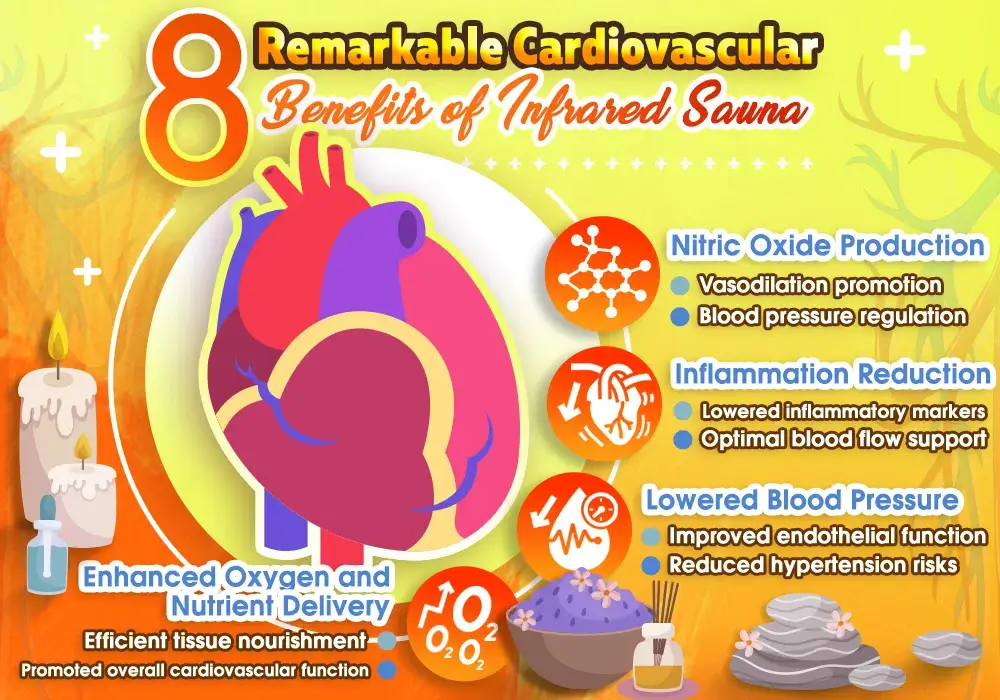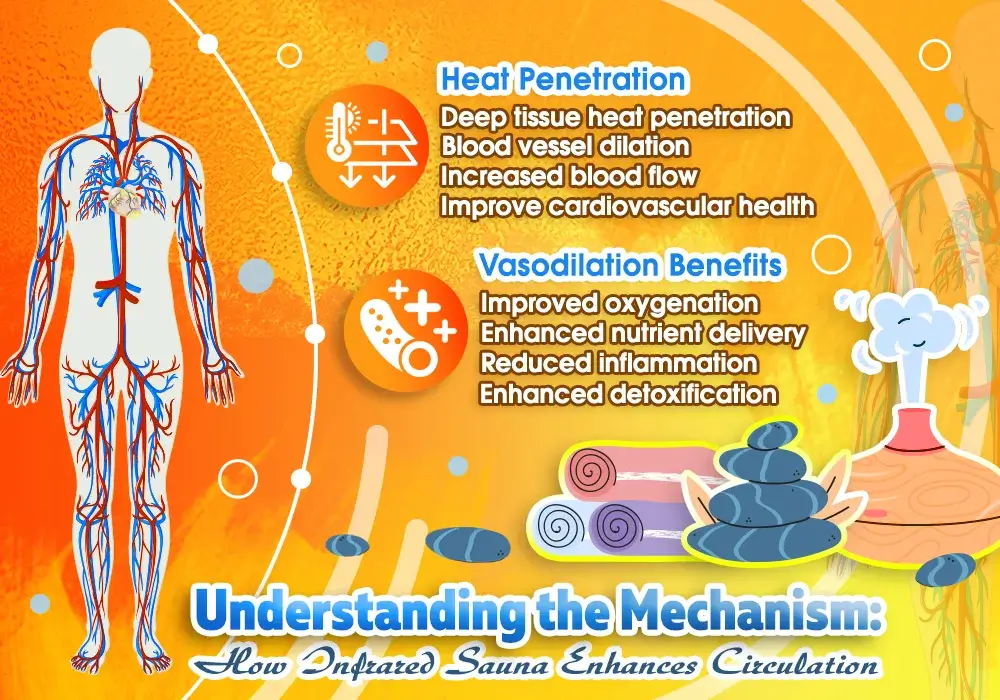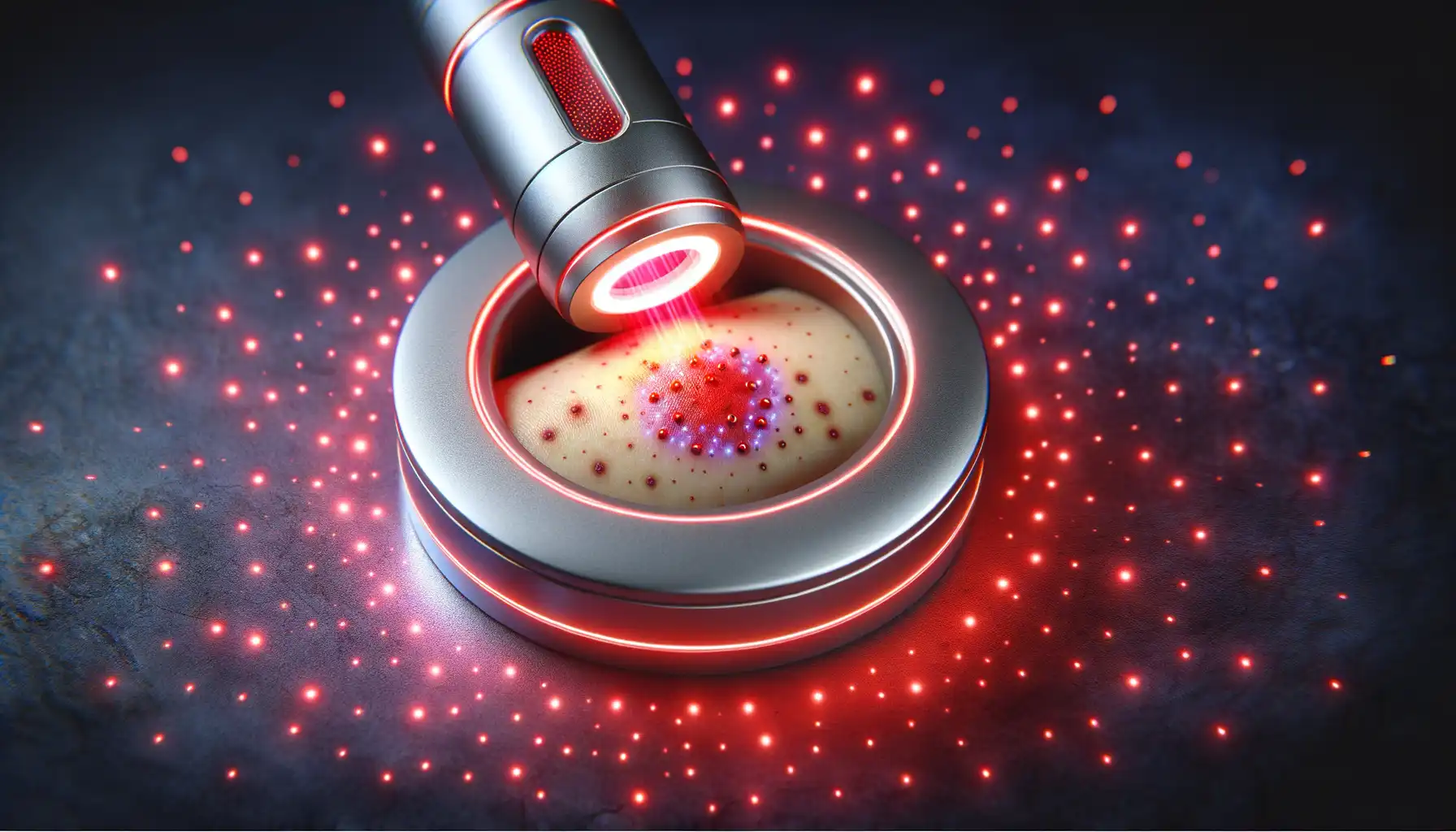Ever feel that pins-and-needles sensation in your feet or notice your hands are always cold? These can be little signs of sluggish circulation. While often overlooked, healthy blood flow is the foundation of your overall well-being. It's your body's internal delivery system, carrying oxygen and vital nutrients to every cell. The good news? You can support this crucial system in some surprisingly relaxing ways. This guide will explore how using an infrared sauna for circulation can be a game-changing, science-backed tool for your health routine.
What is Circulation and Why Does It Matter So Much?
Before we dive into the heat, let's talk about what we mean by "circulation." Your circulatory system, also known as the cardiovascular system, is a vast network of highways (arteries) and smaller roads (capillaries) that transport blood throughout your body. Your heart acts as the powerful pump that keeps everything moving.
When this system works well, it’s a beautiful thing.
- Oxygen Delivery: Red blood cells pick up oxygen from your lungs and deliver it to your brain, muscles, and organs, fueling their every function.
- Nutrient Transport: The blood carries essential nutrients from your food to your cells.
- Waste Removal: It also picks up metabolic waste products, like carbon dioxide, and transports them away for disposal.
- Immune Support: Your immune cells travel through the bloodstream to fight off infections and heal injuries.
Poor circulation can lead to a range of issues, from cold hands and feet to fatigue, muscle cramps, and even more serious cardiovascular concerns over time. Improving blood flow is not just about feeling warmer; it's about enhancing your energy, recovery, and long-term health.
How infrared saunas Supercharge Your Circulation
You've probably heard of traditional saunas, which heat the air around you to make you sweat. Infrared saunas work a bit differently. They use special heaters to emit infrared light, a safe wavelength of light (or energy) that we feel as heat. This infrared energy penetrates your body's tissues directly, warming you from the inside out.
This direct heating is what makes infrared sauna therapy so effective for circulation. It doesn't rely on hot air. Instead, it heats your core body temperature directly.
Near, Mid, and Far: The Infrared Spectrum
Infrared saunas often use a combination of different wavelengths, each with unique properties:
- Near-Infrared (NIR): The shortest wavelength, NIR penetrates just below the skin's surface. It's often associated with skin health and cellular energy production.
- Mid-Infrared (MIR): This wavelength can penetrate deeper into the body’s soft tissues, where it can help with pain relief and inflammation.
- Far-Infrared (FIR): This is the longest wavelength, and it's the star player for circulation. FIR penetrates deep into the body, raising your core temperature and stimulating a host of cardiovascular benefits.
The Science-Backed Benefits for Blood Flow
So, how exactly does sitting in a warm, quiet room improve blood flow? The magic lies in your body's natural response to the gentle, deep heat produced by far-infrared waves.
Unlocking Vasodilation
As your core temperature rises, your body's natural cooling mechanism kicks in. Your blood vessels widen in a process called vasodilation. Think of it as opening up the highways for traffic to flow more freely. Wider vessels mean less resistance, allowing blood to move more easily and efficiently throughout your body. This lowers blood pressure and increases the delivery of oxygen-rich blood to your extremities and deep tissues.
Boosting Nitric Oxide
Infrared heat also stimulates the production of nitric oxide, a fascinating molecule that acts as a powerful vasodilator. A study published in the Journal of Applied Physiology highlights how heat therapy can increase nitric oxide production, which helps relax the inner muscles of your blood vessels. This is a key factor in maintaining cardiovascular health and flexible arteries. Research shows that passive heat therapy can be a powerful tool for improving vascular function, partly through this nitric oxide pathway.
Improving Endothelial Function
The endothelium is the thin membrane lining the inside of your heart and blood vessels. Healthy endothelial function is critical for regulating blood pressure and preventing plaque buildup. The stress of heat exposure, known as hormesis, acts like a workout for your blood vessels. Regular infrared sauna sessions can help improve the flexibility and responsiveness of this lining, contributing to better long-term cardiovascular health.
Increasing Heart Rate and Microcirculation
When you're in an infrared sauna, your body works to cool itself down. This effort increases your heart rate, similar to the effect of light to moderate cardiovascular exercise. This "passive cardio" workout strengthens your heart muscle over time.
Simultaneously, the heat helps open up your smallest blood vessels—the capillaries. This boost in microcirculation ensures that even the tiniest and most remote parts of your system get the oxygen and nutrients they need for repair and function.
Who Can Benefit from Infrared Sauna Therapy?
Because improved blood flow has such wide-ranging effects, many people can find value in infrared sauna therapy.
- Athletes and Active Individuals: Enhanced circulation speeds up muscle recovery by delivering more oxygen to sore tissues and clearing out metabolic waste faster.
- People with Cold Hands and Feet: It can provide immediate and lasting relief by improving blood flow to the extremities.
- Those Focused on Heart Health: By promoting vasodilation, nitric oxide production, and endothelial function, it’s a proactive way to support cardiovascular wellness.
- Anyone Seeking Relaxation and Stress Relief: The gentle heat is deeply calming, and reducing stress has its own positive effects on blood pressure and heart health.
How to Use an Infrared Sauna for Circulation: A Step-by-Step Guide
Ready to get started? Following a simple protocol can help you maximize the benefits safely.
- Hydrate, Hydrate, Hydrate: Drink a large glass of water before you get in. You're going to sweat, so you need to be well-hydrated. Adding a pinch of sea salt or an electrolyte powder can help replace minerals lost through sweat.
- Set the Temperature: For circulation benefits, you don't need extreme heat. A temperature between 120°F and 145°F (49°C to 63°C) is effective. The goal is to heat your body, not the air.
- Determine Your Session Length: Start with shorter sessions of 15-20 minutes. As your body adapts, you can gradually work your way up to 30-40 minutes. Listen to your body—if you feel dizzy or unwell, it's time to get out.
- Frequency is Key: For noticeable results, consistency is more important than intensity. Aim for 3-4 sessions per week.
- The Cooldown: After your session, don't rush back into your day. Take 5-10 minutes to sit and cool down naturally. Your body will continue to sweat. Follow this with a lukewarm or cool shower to rinse off the sweat and close your pores.
- Rehydrate Again: Drink another glass of water with electrolytes after your session to replenish what you've lost.

Safety First: Important Considerations
While infrared saunas are generally safe, they aren't for everyone. It's crucial to consult with a healthcare professional before starting, especially if you have:
- A heart condition or low blood pressure
- Kidney disease
- Are pregnant
- Have implants or medical devices
- Are taking medications that may affect your ability to sweat or tolerate heat
According to the Centers for Disease Control and Prevention (CDC), certain medications and health conditions can increase your risk during extreme heat exposure, so a doctor's guidance is essential. Never consume alcohol before or during a sauna session, as it increases the risk of dehydration and hypotension.
Choosing a Quality Infrared Sauna
If you're considering purchasing a sauna, look for one made from solid, non-toxic wood like hemlock or cedar. Most importantly, verify that the heaters are low-EMF (electromagnetic field) carbon or ceramic heaters to ensure you're getting safe, effective far-infrared heat.
Stacking Your Sauna Session for Maximum Impact
You can enhance the circulatory benefits of your sauna session by "stacking" it with other simple practices.
- Light Movement: Perform some gentle stretches or yoga inside the sauna to further encourage blood flow to your muscles and joints.
- Contrast Therapy: Follow your hot sauna session with a 1-3 minute cold shower. This rapid change in temperature causes your blood vessels to constrict and then re-dilate, acting like a pump for your circulatory system.
- Targeted Hydration: Use your post-sauna hydration as an opportunity to add in minerals. A high-quality electrolyte mix can support nerve function and fluid balance.

A Simple At-Home Protocol to Get Started
Here is a sample plan to integrate infrared sauna therapy into your week for better circulation.
Goal: Improve blood flow, enhance recovery, and support cardiovascular health.
Simple Sauna Protocol:
- Pre-Sauna (15 mins before): Drink 16 oz of water with electrolytes.
- Sauna Session:
- Temperature: 130°F (54°C)
- Duration: Start at 20 minutes, work up to 35 minutes over several weeks.
- Activity: Relax, listen to a podcast, or do gentle stretches.
- Post-Sauna (Immediately after): Sit and air cool for 5 minutes.
- Shower: Take a 2-minute cool (not ice-cold) shower.
- Rehydrate: Drink another 16 oz of water.
Sample Weekly Plan:
- Monday: 25-minute sauna session after a workout to boost recovery.
- Wednesday: 30-minute evening session to de-stress and improve sleep.
- Friday: 25-minute session followed by a cool shower to energize for the weekend.
Your Path to Better Circulation Starts Here
Improving your circulation is one of the most powerful things you can do for your overall health, and infrared sauna therapy offers a relaxing yet profound way to achieve it. By gently heating your body from the inside out, you trigger a cascade of positive effects—from wider blood vessels and increased nitric oxide to a stronger heart.
The warmth of an infrared sauna does more than just relax your muscles; it actively supports your body’s most essential delivery system. By following a consistent and safe protocol, you can unlock better energy, faster recovery, and a healthier cardiovascular system.
Ready to give it a try? Save this guide, talk with your doctor to ensure it’s right for you, and get ready to feel the flow.



